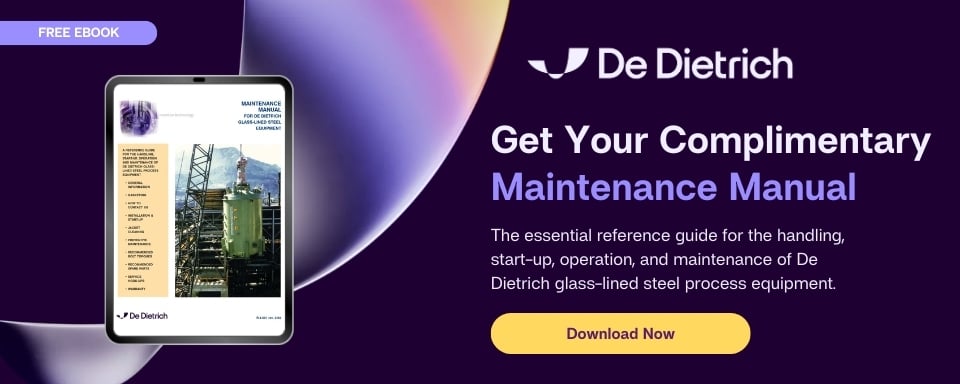12 Critical Do's and Don'ts for Glass-Lined Equipment (Part 2)
 Editor’s Note: This post was originally published in June 2013 and has been updated for accuracy, clarity, and to reflect the latest information.
Editor’s Note: This post was originally published in June 2013 and has been updated for accuracy, clarity, and to reflect the latest information.
In last week’s blog post, we covered some best practices for operating and maintaining your glass-lined equipment - including key behaviors to avoid (If you haven't read part 1 yet, catch up here).
This week, we're concluding the list with six more critical “Do’s” and “Don’ts” that focus on effective, efficient, and safe handling of glass-lined vessels:
7. Ensure Spark Testing is Performed by Trained Personnel
Do not use spark testers not recommended by the manufacturer
Spark testing is a vital maintenance technique for locating defects in the glass lining of vessels and accessories. It's used for preventive maintenance, confirming suspected failures, and identifying areas needing repair.
In-plant spark testing involves a 6,000-volt AC or DC power source. Using higher voltage than recommended can damage the glass lining. The voltage is applied across a clean, dry glass surface using an insulated, handheld fault probe. If metal is exposed, a visible spark will jump from the probe, revealing the defect.
Important: Spark testing can be destructive if not done correctly. We offer training seminars to ensure your team can inspect and test equipment safely and effectively.
8. Flush Spills Immediately and Neutralize Affected Surfaces
Do not leave chemical spills on the vessel exterior
Exterior corrosion can eventually compromise the interior glass lining. That’s why cleanliness is essential, inside and out. Be mindful of temperature when cleaning; avoid thermal shock by ensuring the temperature of the rinse water is compatible with the vessel surface
9. Monitor and Approve All Materials Before Charging the Vessel
Do not charge materials through nozzles without filtration
Filtering materials before charging is crucial to prevent damage from foreign particles. Solids can strike and scratch the polished glass surface, whether on the vessel or agitator blades. Proper filtration also helps ensure a more homogeneous mixture.
10. Maintain the Minimum Fluid Level Required for Mixing
Do not operate the agitator at or below blade level
Running the agitator with insufficient fluid can cause the shaft to “skate,” leading to excessive stress and runout at the seal area and upper shaft. This results in premature seal failure and potential glass damage. Always confirm there’s enough volume in the vessel before starting the agitator. If this becomes a recurring issue, it may be time to consider a different-sized reactor.
11. Close and Secure All Vessel Openings When Not in Use
Do not leave the manway cover open
Leaving a manway open and unattended poses several risks: it can slam shut and fracture the glass, or foreign objects might fall in and damage the lining. Always secure the manway when not in use. A manway assist device is also a great way to prevent accidental closures.
12. Open the Vent When Filling the Jacket
Do not fill a jacketed vessel with the vent closed
The vent allows air to escape during jacket filling. If it remains closed, trapped air can create pockets that reduce performance and lead to operational issues. Always open the jacket vent before filling.
Whether you're currently operating glass-lined equipment or considering it for future use, these common-sense guidelines - paired with proper training and preventative care - will help keep your system running safely and efficiently for years.
For even more detail, download our free Installation and Maintenance Manual for De Dietrich Glass-Lined Steel Equipment.
